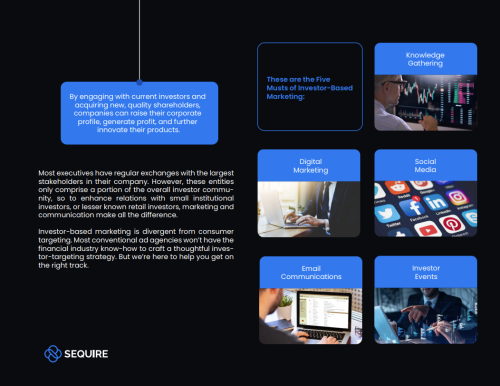The investment community has been experimenting with Big Data and AI tools for several years now, and the latest signs are that these are making their way into the IRO’s toolkit.
While McKinsey recently noted that mentions of Big Data increased four-fold in research for asset managers between 2012 and 2017, the equivalent AI and alternative data tools haven’t been as abundantly available for IR teams to experiment with. But at the NIRI national conference earlier this month, there were signs this is about to change.
Evan Schnidman, founder and CEO of Prattle, was one of the keynote speakers at the event, where he explained how investors have been using his company’s AI tool recently.
Speaking exclusively to IR Magazine after his panel, he explained: ‘We specialize in analyzing complex, nuanced market-moving language. We started out by looking at central banks and we’ve since applied that to every publicly traded organization in the US. So we look at every single one of their publicly available primary source communications: earnings calls, speeches by corporate officers, investor days, everything released on the corporate website and press releases. It ends up amounting to about 5 mn documents per day.’
Schnidman says this information is then condensed into a single quantitative score indicating whether the market is likely to act positively or negatively to a company’s announcement, event or release.
For the last couple of years, this tool has been sold to the investment community. But in recent months, Prattle has started talked to IR teams about how it can be used to proactively prepare for market-moving events. ‘The IROs love what we’re doing, including the ability to input language ahead of time and see how the market is likely to respond to that language,’ Schnidman says.
Unconscious pitfalls
He explains that the Prattle tool tracks the speech pattern and delivery of specific executives – enabling investors to compare peers, or an individual’s tone from one company to another. For IR teams, he says this tool can successfully be used to coach executives on the importance of being consistent with their delivery.
‘There are some cues people don’t think about as being positive or negative – for instance, formality of language,’ Schnidman explains. ‘It’s just human nature that when we’re announcing bad news we try to distance ourselves from it, so we become increasingly formal with our language. We use full names: first, middle and last names. Immediately the psychological effect is to bring us back to our moms yelling at us when we were kids.
‘So that’s a really big challenge for both the IRO and company executives to be able to restrain their language and keep an even keel. To keep the same tone, the same inflection and really the same linguistic cadence across good news and bad.’
Schnidman also confirms that some IR teams run their earnings transcript through Prattle ahead of the earnings call, to see whether they’re unknowingly coming off as positive or negative. IR Magazine has previously reported on IR teams experimenting with IBM Watson for a similar use.
Sell-side research for IR
The topic of Big Data for IR also came up during a session on the future of sell-side research. Richard Hockley, managing director and head of client solutions at UBS Evidence Lab, explained the journey the sell side has been on.
UBS’ Evidence Lab was originally conceived to provide research support to the bank’s own analysts. But it has since grown to a sophisticated, resource-intensive research entity with more than 40 practice groups examining ‘hundreds of billions of data items each month’, according to the company’s website. The team has gained headlines for its innovative approaches to alternative methods of research, such as taking apart an electric car to examine each individual part and assess the profitability of the model.
Speaking at the NIRI conference, Hockley said: ‘For the first five years we were [the] insider sell-side research [division] at UBS. At the beginning of this year we started going out to institutional clients and giving them access to this data. As we figure out our business and how they want to consume data, we’ll then think about how to make this available to corporates.
‘For instance, here’s how the buy side sees you on the earnings call. But we can also look at what data we have on your competitors. There’s a whole range of different models this can evolve into. We ultimately want to democratize this for the buy side, for corporates and for academia. We run this very large and capital-intensive Big Data business and we want anybody to be able to use it.’
Hockley said the UBS Evidence Lab has talked to issuers about what data might be most useful and how it could be accessed, but there is no formal offering just yet.
‘Right now, we’re in discovery mode,’ he explained. ‘As we get feedback on how the buy side wants to use this, we can tweak it. And for corporates, it will be different. You’re not going to want data on the volume of water in a Chinese lake – that doesn’t make sense if you’re selling hamburgers in the US.’
Hockley said the offering for corporates will likely be ready to launch in Q4 this year, or Q1 next year.










